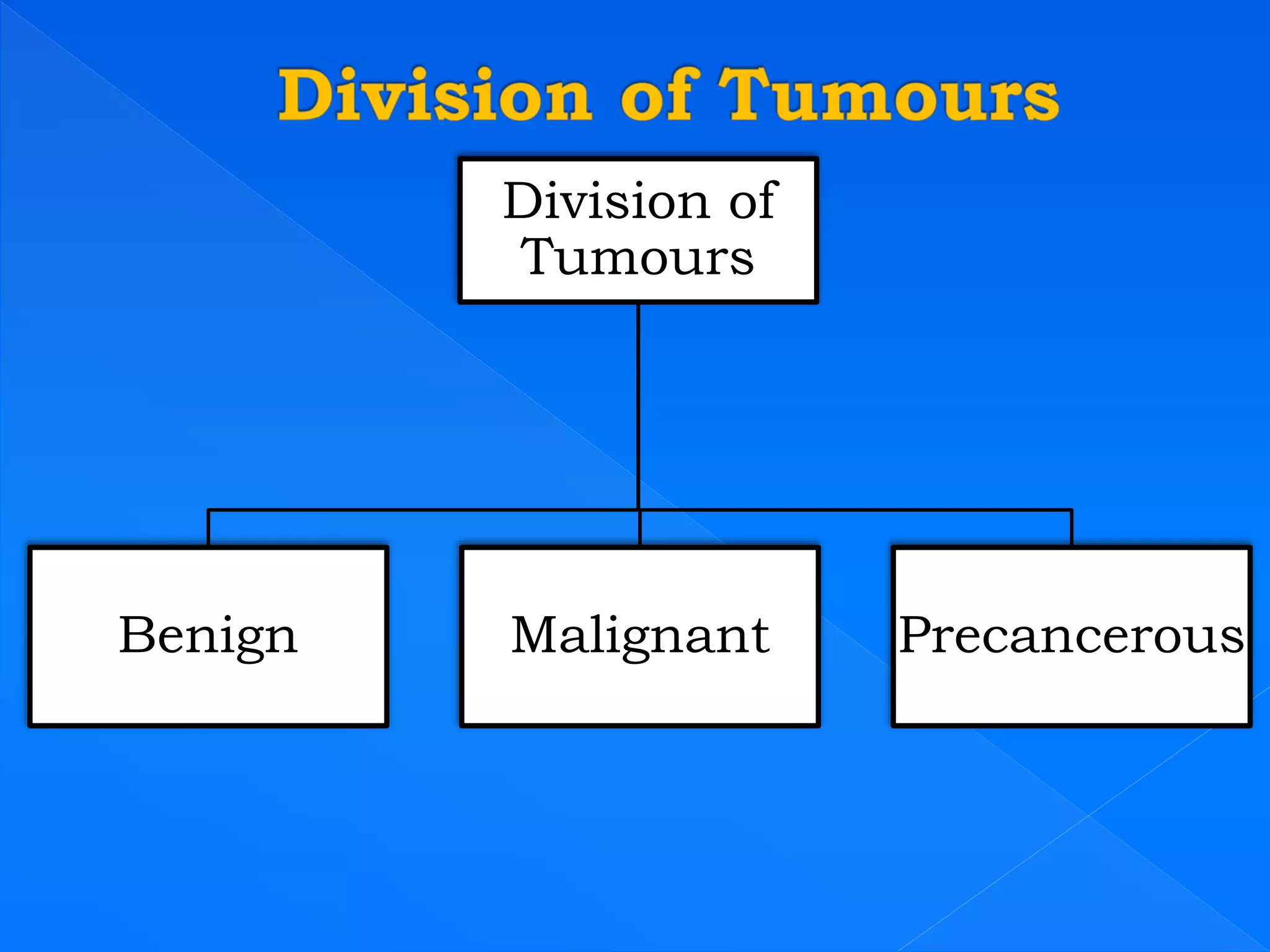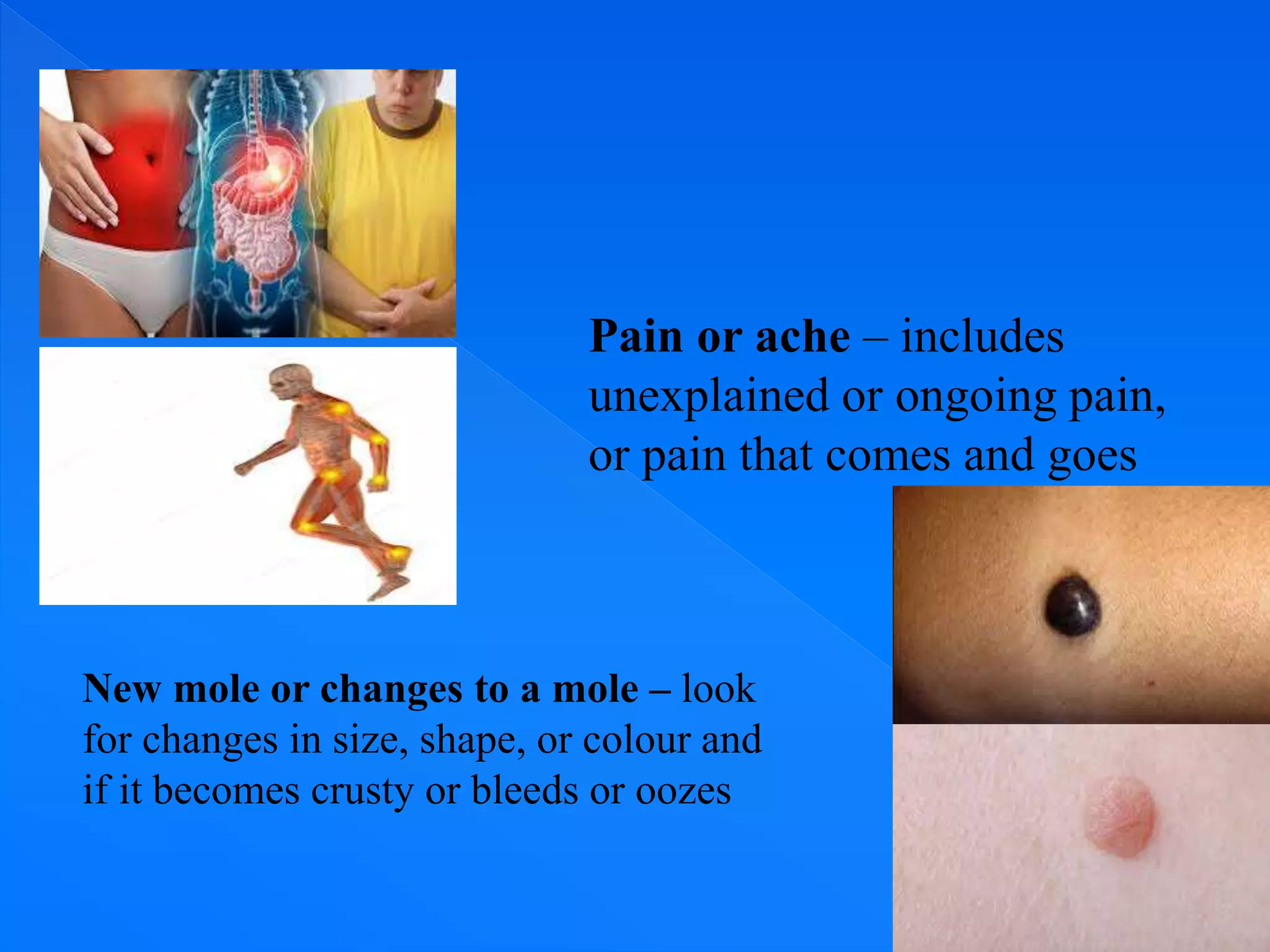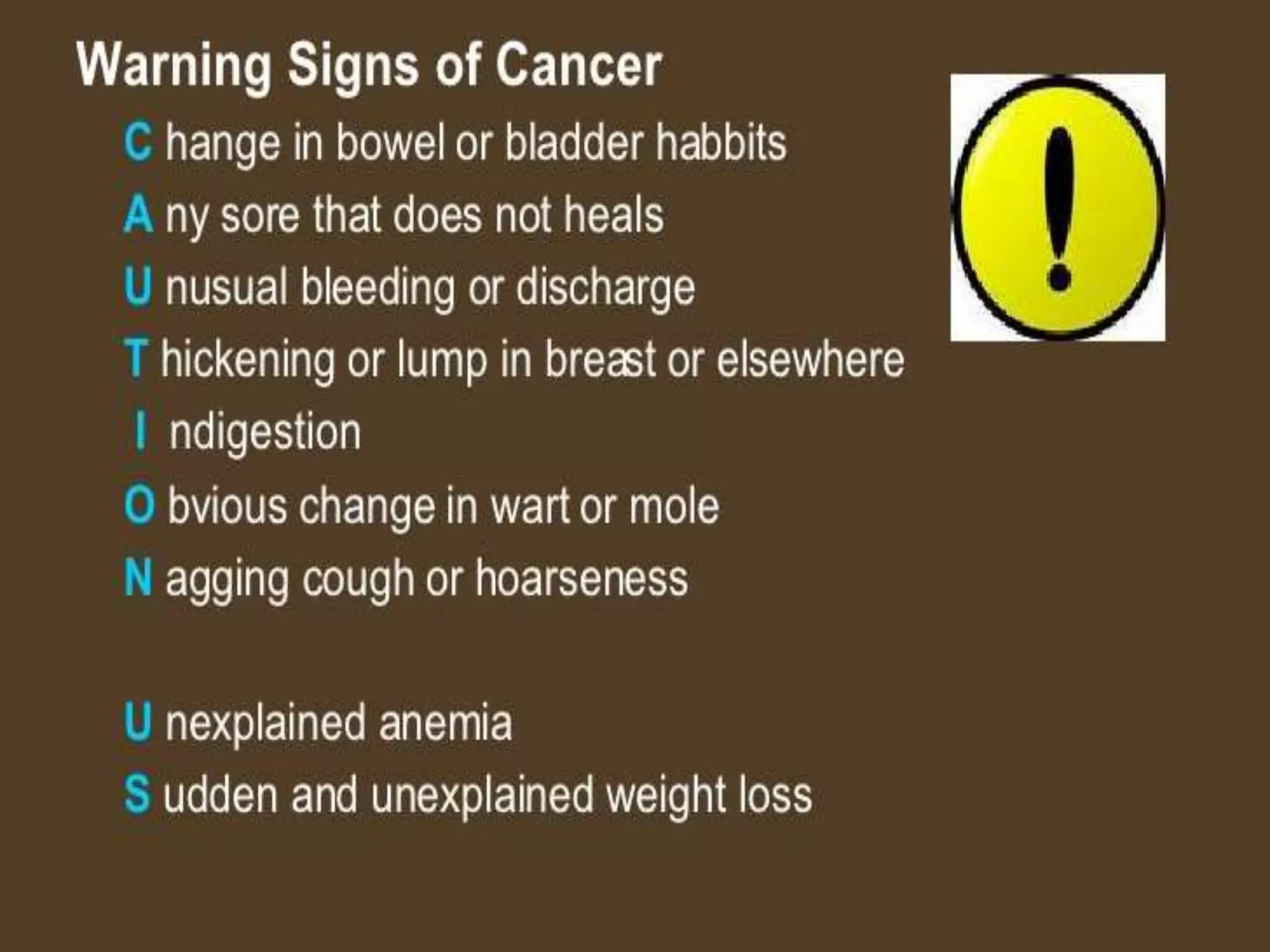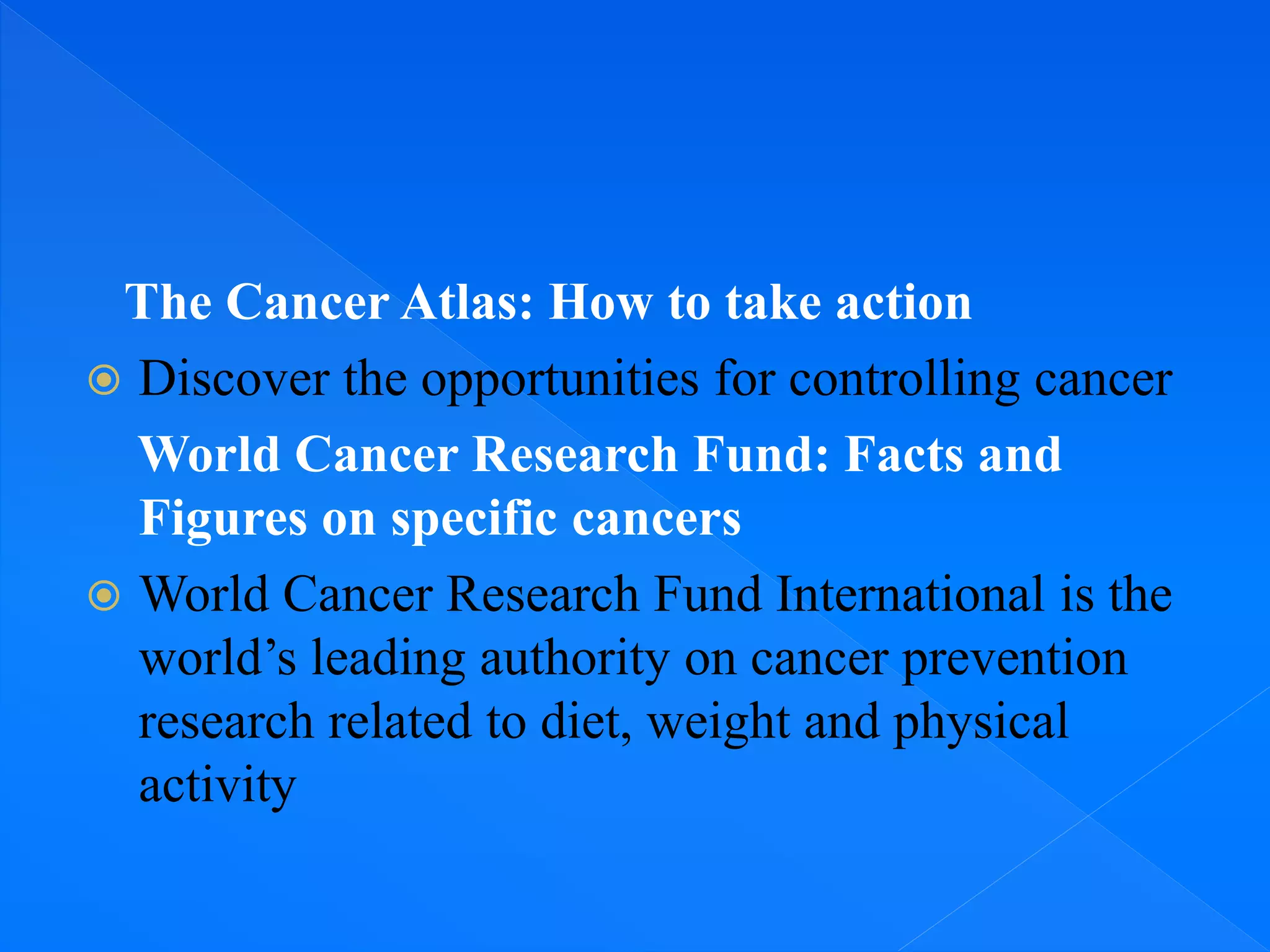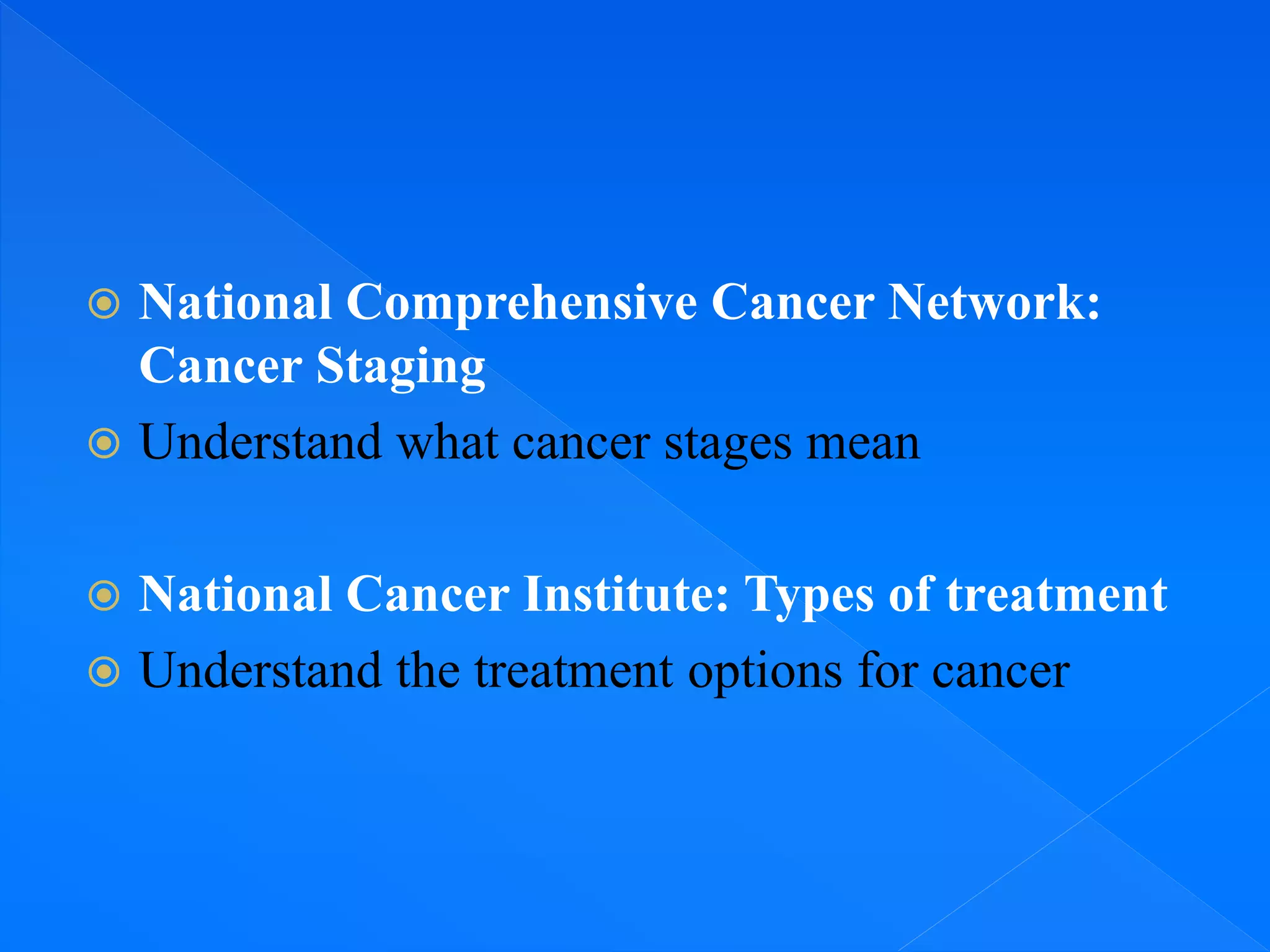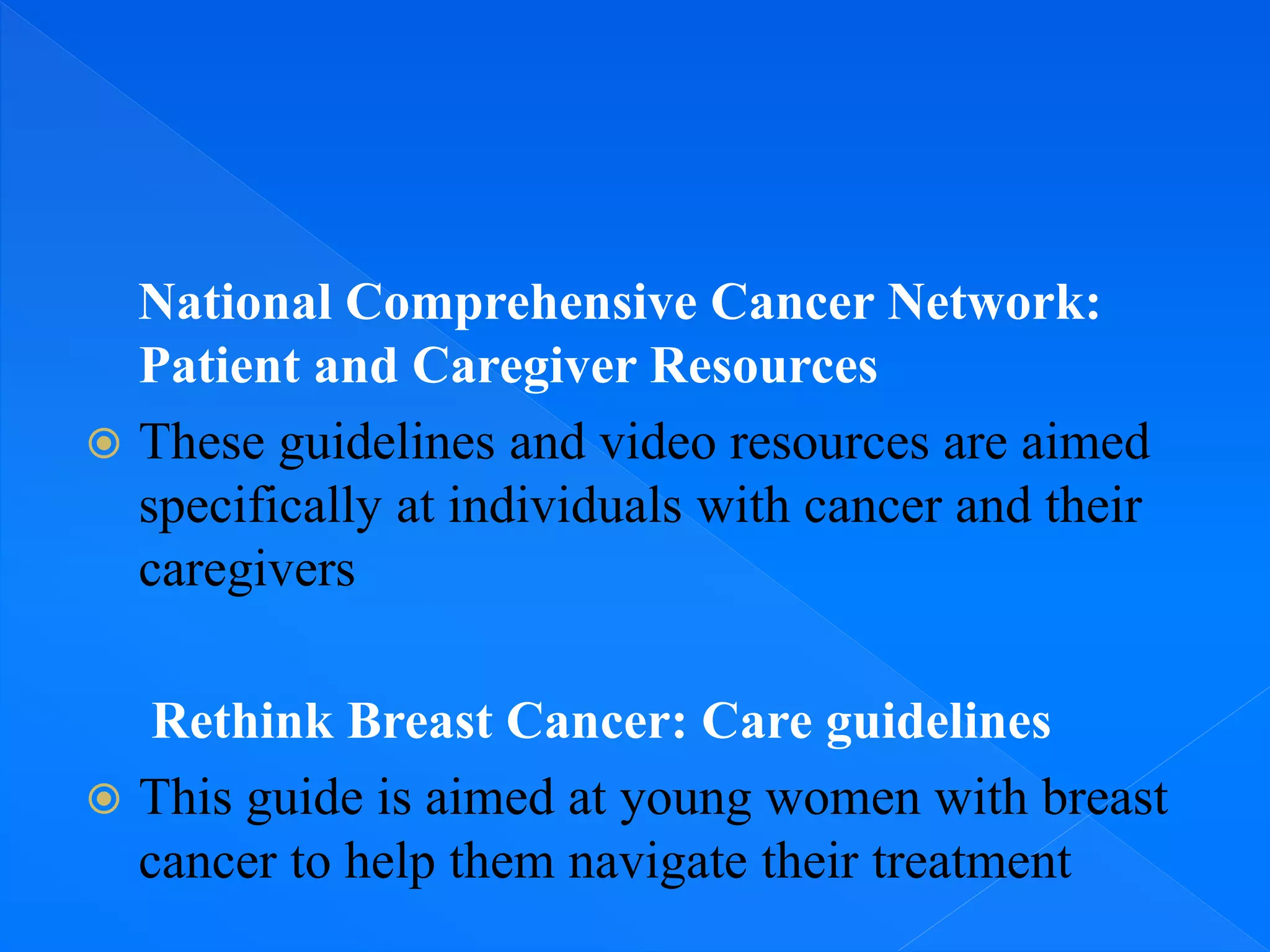Cancer is the second leading cause of death worldwide, killing over 9 million people annually. While at least 1/3 of cancers are preventable, 70% of cancer deaths occur in low and middle income countries. Implementing strategies for prevention, early detection, and treatment could save up to 3.7 million lives each year. The document provides an overview of cancer causes, types, risk factors, symptoms, diagnosis, treatment options including surgery, chemotherapy, radiation, immunotherapy, hormone therapy, palliative care, and survivorship issues. It emphasizes the importance of awareness, prevention, equitable access to services, government action, addressing the mental/emotional impact, and the need for skilled healthcare workers to reduce the global cancer burden.




